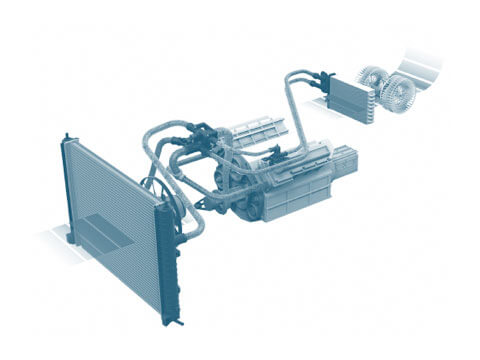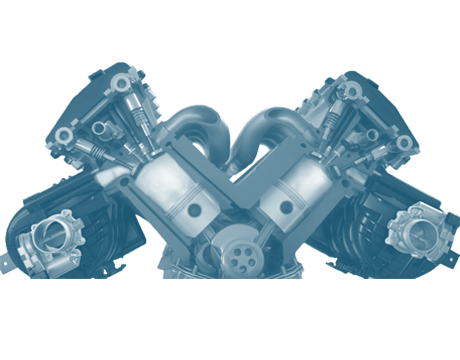Coolant
Energy is converted into heat in internal combustion engines. This heat needs to be discharged to ensure that the engine does not overheat. The engine cooling system is tasked with this function. In this system, the liquid coolant absorbs the heat and conveys it to the radiator, which gives off the heat.
Function
The heat which is generated during the combustion process in the engine first travels past the components of the engine before being given off to the coolant. The heat is conveyed to the radiator through the circulation of coolant in the coolant circuit. There, it is finally discharged to the ambient air.
The flow of coolant is controlled by a thermostat to keep the coolant temperature constant.
The liquid coolant used is a mixture of water and antifreeze (usually ethylene glycol). Demineralised water or distilled water are frequently used for such applications. Furthermore, depending on the specific application scenario, special additives are also used which provide additional protection against corrosion and rust.
Topping up coolant
In the engine compartment, there is a plastic container displaying two markings: “MIN” and “MAX”. If the liquid level is below the minimum, the coolant should be topped up. To do so, coolant available from specialist retailers should be used.
Topping up with pure water is discouraged. If the level is above the maximum recommended limit, there may be a problem. A visit to an automotive repair workshop is recommended in this case.
In winter, the concentration of the antifreeze should also be checked by an automotive repair workshop in addition to the level of the liquid. If the concentration is too low, it will be necessary to top up the antifreeze.
The following points should be observed when topping up or replacing the coolant:
- The coolant to be used in the vehicle is specified by the manufacturer and can be found in the vehicle manual. Using the wrong type of coolant can cause damage to the engine’s cooling system.
- Different types of antifreeze should not be mixed together as these can have different formulations and therefore also different properties.
- If coolant is being topped up, the ratio of water to antifreeze will be altered. The mixing ratio can be checked using appropriate measuring equipment. The liquid should only be replaced or topped up when the engine is cool! Serious injuries can occur when opening the lid because the cooling system is pressurised.
Safety
Only a fully functional engine-cooling system can ensure that the engine functions reliably under all operating and weather conditions. Irksome breakdowns due to the engine overheating and expensive repairs are thus avoided.
Value retention
When maintenance work is undertaken at the intervals specified by the vehicle manufacturer, the cooling system is also tested. In the course of such tests, specialists test the antifreeze content of the coolant and check all system components for leaks and damage.
Coolant can also lose some of its effectiveness over time, which is why it should be completely replaced every two years or so. To prevent water from freezing at sub-zero temperatures, it should always be mixed with antifreeze.
After all, liquid expands as it freezes. As a consequence of this, the cooling circuit will rupture, a leak will develop, and the liquid will escape. When filling up the radiator antifreeze, the specification provided by the manufacturer should be observed.
Using the wrong coolant can damage cooling-system components due to material incompatibilities. Special additives offer additional protection against corrosion and rust.
Protection of the environment
Coolant is not permitted to infiltrate groundwater or simply be poured down the drain. That is why the coolant should always be replaced by an automotive repair workshop, which can dispose of the old liquid in the correct manner.



